- Home
- H. G. Wells
War of the Worlds (Barnes & Noble Classics Series)
War of the Worlds (Barnes & Noble Classics Series) Read online
Table of Contents
From the Pages of
Title Page
Copyright Page
H. G. Wells
The World of H. G. Wells andTheWar of the Worlds
Introduction
Praise
BOOK ONE - THE COMING OF THE MARTIANS
Chapter 1 - The Eve of the War
Chapter 2 - The Falling Star
Chapter 3 - On Horsell Common
Chapter 4 - The Cylinder Opens
Chapter 5 - The Heat-Ray
Chapter 6 - The Heat-Ray in the Chobham Road
Chapter 7 - How I Reached Home
Chapter 8 - Friday Night
Chapter 9 - The Fighting Begins
Chapter 10 - In the Storm
Chapter 11 - At the Window
Chapter 12 - What I Saw of the Destruction of Weybridge and Shepperton
Chapter 13 - How I Fell in with the Curate
Chapter 14 - In London
Chapter 15 - What Had Happened in Surrey
Chapter 16 - The Exodus from London
Chapter 17 - The “Thunder Child”
BOOK TWO - THE EARTH UNDER THE MARTIANS
Chapter 1. - Under Foot
Chapter 2 - What We Saw from the Ruined House
Chapter 3 - The Days of Imprisonment
Chapter 4 - The Death of the Curate
Chapter 5 - The Stillness
Chapter 6 - The Work of Fifteen Days
Chapter 7 - The Man on Putney Hill
Chapter 8 - Dead London
Chapter 9 - Wreckage
Chapter 10 - The Epilogue
Endnotes
Inspired by The War of the Worlds
Comments & Questions
For Further Reading
From the Pages of
The War of the Worlds No one would have believed in the last years of the nineteenth century that this world was being watched keenly and closely by intelligences greater than man’s and yet as mortal as his own: that as men busied themselves about their various concerns they were scrutinised and studied, perhaps almost as narrowly as a man with a microscope might scrutinise the transient creatures that swarm and multiply in a drop of water. (page 9)
“The chances against anything manlike on Mars are a million to one.” (page 14)
Those who have never seen a living Martian can scarcely imagine the strange horror of its appearance. The peculiar V-shaped mouth with its pointed upper lip, the absence of brow ridges, the absence of a chin beneath the wedgelike lower lip, the incessant quivering of this mouth, the Gorgon groups of tentacles, the tumultuous breathing of the lungs in a strange atmosphere, the evident heaviness and painfulness of movement due to the greater gravitational energy of the earth—above all, the extraordinary intensity of the immense eyes—were at once vital, intense, inhuman, crippled and monstrous. (page 27)
“They’re coming!” (page 36)
One or two adventurous souls, it was afterwards found, went into the darkness and crawled quite near the Martians; but they never returned, for now and again a light-ray, like the beam of a warship’s searchlight, swept the common, and the Heat-Ray was ready to follow. (page 42)
“They wiped us out—simply wiped us out.” (page 61)
Humanity gathered for the battle. (page 78)
Canisters smashed on striking the ground—they did not explode—and incontinently disengaged an enormous volume of heavy, inky vapour, coiling and pouring upward in a huge and ebony cumulus cloud, a gaseous hill that sank and spread itself slowly over the surrounding country. And the touch of that vapour, the inhaling of its pungent wisps, was death to all that breathes. (page 100)
If one could have hung that June morning in a balloon in the blazing blue above London every northward and eastward road running out of the tangled maze of streets would have seemed stippled black with the streaming fugitives, each dot a human agony of terror and physical distress. (page 118)
All the complex apparatus of digestion, which makes up the bulk of our bodies, did not exist in the Martians. They were heads—merely heads. Entrails they had none. They did not eat, much less digest. Instead, they took the fresh, living blood of other creatures, and injected it into their own veins. (page 142)
The Martians interchanged thoughts without any physical intermediation. (page 146)
“It never was a war, any more than there’s war between man and ants.” (page 172)
Published by Barnes & Noble Books
122 Fifth Avenue
New York, NY 10011
www.barnesandnoble.com/classics
The War of the Worlds was first published in 1898.
Originally published in mass market format in 2004 by Barnes & Noble Classics
with new Introduction, Notes, Biography, Chronology, Inspired By,
Comments & Questions, and For Further Reading.
This trade paperback edition published in 2008.
Introduction, Notes, and For Further Reading
Copyright.© 2004 by Alfred Mac Adam.
Note on H. G. Wells, The World of H. G. Wells and The War of the Worlds,
Inspired by The War of the Worlds, and Comments & Questions
Copyright © 2004 by Barnes & Noble, Inc.
All rights reserved. No part of this publication may be reproduced or transmitted in any form or by any means, electronic or mechanical, including photocopy, recording, or any information storage and retrieval system, without the prior written permission of the publisher.
Barnes & Noble Classics and the Barnes & Noble Classics colophon are trademarks of Barnes & Noble, Inc.
The War of the Worlds
ISBN-13: 978-1-59308-362-5 ISBN-10: 1-59308-362-9
eISBN : 978-1-411-43346-5
LC Control Number 2007941534
Produced and published in conjunction with:
Fine Creative Media, Inc.
322 Eighth Avenue
New York, NY 10001
Michael J. Fine, President and Publisher
Printed in the United States of America
QM
1 3 5 7 9 10 8 6 4 2
FIRST PRINTING
H. G. Wells
Social philosopher, utopian, novelist, and “father” of science fiction and science fantasy, Herbert George Wells was born on September 21, 1866, in Bromley, Kent. His father was a poor businessman, and young Bertie’s mother had to work as a lady’s maid. Living “below stairs” with his mother at an estate called Uppark, Bertie would sneak into the grand library to read Plato, Swift, and Voltaire, authors who deeply influenced his later works. He showed literary and artistic talent in his early stories and paintings, but the family had limited means, and when he was fourteen years old, Bertie was sent as an apprentice to a dealer in cloth and dry goods, work he disliked.
He held jobs in other trades before winning a scholarship to study biology at the Normal School of Science in London. The eminent biologist T. H. Huxley, a friend and proponent of Darwin, was his teacher; about him Wells later said, “I believed then he was the greatest man I was ever likely to meet.” Under Huxley’s influence, Wells learned the science that would inspire many of his creative works and cultivated the skepticism about the likelihood of human progress that would infuse his writing.
Teaching, textbook writing, and journalism occupied Wells until 1895, when he made his literary debut with the now-legendary novel The Time Machine, which was followed before the end of the century by The Island of Dr. Moreau, The Invisible Man, and The War of the Worlds, books that established him as a major writer. Fiercely critical of Victorian mores, he published voluminously, in fiction and nonfiction,
on the subjects of politics and social philosophy. Biological evolution does not ensure moral progress, as Wells would repeat throughout his life, during which he witnessed two world wars and the debasement of science for military and political ends.
In addition to social commentary presented in the guise of science fiction, Wells authored comic novels like Love and Mr. Lewisham, Kipps, and The History of Mister Polly that are Dickensian in their scope and feeling, and a feminist novel, Ann Veronica. He wrote specific social commentary in The New Machiavelli, an attack on the socialist Fabian Society, which he had joined and then rejected, and literary parody (of Henry James) in Boon. He wrote textbooks of biology, and his massive The Outline of History was a major international best-seller.
By the time Wells reached middle age, he was admired around the world, and he used his fame to promote his utopian vision, warning that the future promised “Knowledge or extinction.” He met with such preeminent political figures as Lenin, Roosevelt, and Stalin and continued to publish, travel, and educate during his final years. Herbert George Wells died in London on August 13, 1946.
The World of H. G. Wells andThe
War of the Worlds
1866 Herbert George Wells, known as a child as Bertie, is born on September 21 in Bromley, Kent. His pious parents, who had once been domestic servants, are often on the brink of financial ruin. Bertie’s father, now owner of a china shop, is an excellent cricket player but a bad businessman.
1871 Lewis Carroll’s Through the Looking Glass and What Alice Found There is published. The first books of George Eliot’s Middlemarch are published. A British Act of Parliament legalizes labor unions. The Royal Albert Hall of Arts and Sciences opens in London.
1879 Wells’s mother takes work as a housekeeper at a nearby estate called Uppark, where she had served as a lady’s maid before her marriage. Bertie lives with her at Uppark, where he reads copiously from the library.
1880 Bertie’s mother has him become an apprentice to a draper (a dealer in cloth and dry goods). He finds the work unsatisfying yet stays with this position and another for a pharmacist for the next two years.
1882 Charles Darwin dies.
1883 Bertie dislikes retail work and takes a position as an assistant teacher at Midhurst Grammar School. Robert Louis Stevenson’s Treasure Island is published.
1884 Wells wins a scholarship and enters the Normal School of Science in the South Kensington section of London. His mentor, the eminent biologist and proponent of Darwinism T. H. Huxley, deeply influences him, introducing him to evolutionary science and skepticism about human progress.
1887 The first Sherlock Holmes story, A Study in Scarlet, by Sir Arthur Conan Doyle, is published.
1888 Wells publishes sketches called The Chronic Argonauts that later will become The Time Machine. He graduates from London University.
1891 He marries his cousin, Isabel Mary Wells. Oscar Wilde’s The Picture of Dorian Gray and Thomas Hardy’s Tess of the d‘Urbervilles are published.
1893 Wells’s marriage is unhappy. He falls in love with a beautiful young student named Amy Catherine (“Jane”) Robbins. His first published book, Textbook of Biology, appears. He becomes a full-time writer, known for independence of mind and works that challenge conventional thinking.
1895 After Isabel and H. G. divorce, he marries Jane Robbins. His tireless supporter, she types all of his manuscripts and correspondence. Wells publishes The Time Machine, which parodies the English class system and provides a distressing view of the future of human society. The Stolen Bacillus, a collection of short stories, and The Wonderful Visit, a science- fiction novel, also appear. In his lifetime, Wells will publish more than eighty books.
1896 Wells publishes The Island of Dr. Moreau, in which a mad scientist turns animals into semihuman creatures, and The Wheels of Chance, about the bicycling craze.
1897 The Faust-like tale The Invisible Man appears. Bram Stoker’s Dracula is published.
1898 Wells publishes The War of the Worlds, about an invasion of Martians.
1900 In the first years of the century, Wells and Jane host numerous luminaries in their home and actively engage in various political and intellectual debates. Wells publishes a comic novel of lower-middle-class life, Love and Mr. Lewisham, about a struggling teacher.
1901 A son, George Philip Wells, is born to Jane and H. G. The First Men in the Moon, which predicts human travels into outer space, and Anticipations of the Reaction of Mechanical and Scientific Progress upon Human Life and Thought, in which Wells advances his ideas about social progress, are published. Queen Victoria dies.
1903 A second son, Francis Richard, is born. Mankind in the Making, another book promoting social progress, is published. Wells joins the socialist Fabian Society, but soon draws fire from George Bernard Shaw and others for his deviations from the Fabian line. Throughout his life, Wells takes every opportunity to share and implement his dream of a utopian society.
1905 Wells publishes the somewhat autobiographical comic novel Kipps: The Story of a Simple Soul, in which a man receives an unexpected inheritance. A Modern Utopia, again centered around Wells’ ideas about social progress, also appears. George Bernard Shaw’s play Major Barbara is published.
1908 Wells resigns from the Fabian Society. He publishes The War in the Air, which foretells aerial combat.
1909 He publishes Tono-Bungay, a panoramic and critical picture of English society, and Ann Veronica: A Modern Love Story, a feminist novel.
1910 Wells publishes an ode to the past in the comic novel The History of Mr. Polly, in which a shopkeeper changes his life. E. M. Forster’s Howards End appears.
1911 In The New Machiavelli, Wells excoriates the Fabian Society and provides portraits of its notable members. His collection The Country of the Blind and Other Stories appears.
1914 World War I begins. Wells and the writer Rebecca West, with whom he has a long affair, have a son, Anthony. Wells travels to Russia for the first time. He publishes The World Set Free, which predicts the use of the atomic bomb in warfare.
1915 Boon, a novel that satirizes Henry James’s style, is published under the pen name Reginald Bliss; it provokes an acerbic exchange between the two authors. D. H. Lawrence’s The Rainbow is published.
1916 Wells travels to the war fronts of Italy, Germany, and France. He publishes Mr. Britling Sees It Through, a realistic portrayal of the English during the war. James Joyce’s Portrait of the Artist as a Young Man is published.
1918 Wells creates anti-German information for the Ministry of Propaganda.
1919 He coauthors, with Viscount Edward Grey, The Idea of a League of Nations.
1920 In an effort to rally’supporters to his progressive political agenda, Wells travels again to Russia to meet with Lenin. Russia in the Shadows and his immensely popular The Outline of History are published. Edith Wharton’s The Age of Innocence is published.
1922 A Short History of the World appears. T. S. Eliot’s The Wasteland is published. James Joyce’s Ulysses is published in Paris.
1927 Jane Wells dies. Virginia Woolf’s To the Lighthouse is published.
1928 Evelyn Waugh’s Decline and Fall appears.
1929 Wells publishes The Common Sense of World Peace.
1929-1930 In collaboration with his son, G. P. Wells, and biologist Julian ‘Huxley (grandson of T. H. Huxley), he publishes a work on biology called The Science of Life.
1930 W. H. Auden’s Poems is published.
1933 Wells publishes the novel The Shape of Things to Come, the story of a world war that lasts three decades in which cities are destroyed by aerial bombs.
1934 Wells travels to Moscow to speak with Stalin and returns despondent over the encounter. The writer’s good-natured Experiment in Autobiography, a portrait of himself and his contemporaries, appears. He visits the United States and confers with Roosevelt.
1935 Based on the novel The Shape of Things to Come, Wells writes the screenplay for Things to Come, a film produced by Alexand
er Korda and directed by William Cameron Menzies.
1936 Things to Come is released in the United States.
1938 Orson Welles’s radio broadcast of The War of the Worlds sends millions of Americans into panic.
1939 World War II begins.
1945 World War II ends. Wells publishes Mind at the End of Its Tether, a vision of mankind rejected and destroyed by nature. George Orwell’s Animal Farm appears.
1946 Herbert George Wells dies in London on August 13.
Introduction
In 1895 Herbert George Wells learned to ride a bicycle. Hardly an unusual occurrence, for the twenty-nine-year-old Wells it represented a major accomplishment and a tremendous liberation. Wells had always been physically weak—his lungs hemorrhaged on more than one occasion—and he further punished his constitution by cramming for examinations in order to extricate himself from abject poverty and boring jobs with no future. The bicycle, by 1895 so popular in England that manufacturers could not keep pace with demand, revealed to Wells and countless thousands of others that using a body—even a not especially strong body—to propel a machine could free them from dependence on collective modes of transportation. People could now travel at their own speed, wherever and whenever they chose.
The bicycle is also symbolic of Wells’s solitary individuality—even later when he designed a tandem bicycle so he and his wife could ride together, he made sure he would do the steering. By becoming a writer, Wells liberated himself from family and employers, but like a bicyclist, his success depended entirely on his own efforts and willpower. If he crashed, he would have no one to blame but himself. In this sense, Wells is the ultimate expression of nineteenth-century individualism: the solitary Romantic at odds with things as they are, the visionary able to see things to which others are blind, the self-made man who owes nothing to anyone yet concerns himself with the future of all mankind.

 Ann Veronica: A Modern Love Story
Ann Veronica: A Modern Love Story The Time Machine
The Time Machine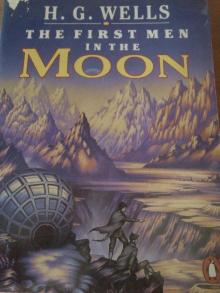 The First Men in the Moon
The First Men in the Moon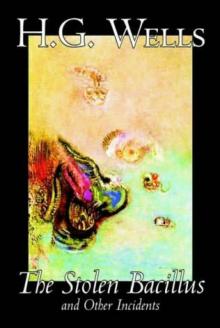 The Stolen Bacillus and Other Incidents
The Stolen Bacillus and Other Incidents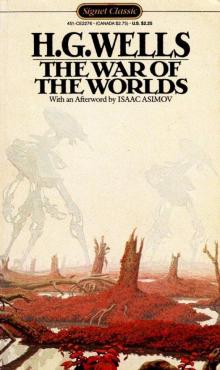 The War of the Worlds
The War of the Worlds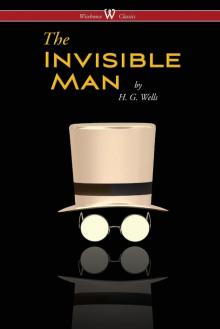 The Invisible Man: A Grotesque Romance
The Invisible Man: A Grotesque Romance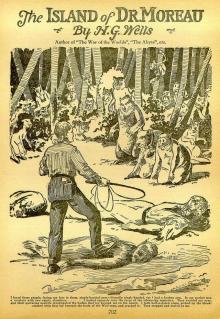 The Island of Doctor Moreau
The Island of Doctor Moreau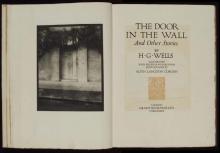 The Door in the Wall, and Other Stories
The Door in the Wall, and Other Stories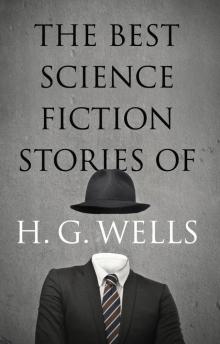 The Best Science Fiction Stories of H G Wells
The Best Science Fiction Stories of H G Wells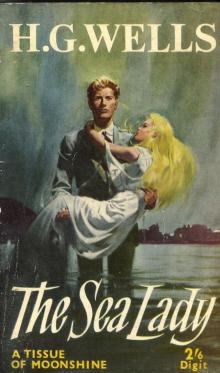 The Sea Lady
The Sea Lady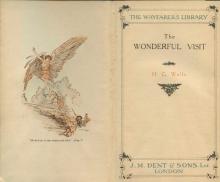 The Wonderful Visit
The Wonderful Visit Love and Mr. Lewisham
Love and Mr. Lewisham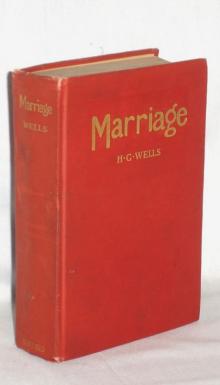 Marriage
Marriage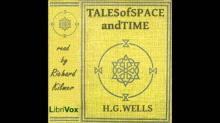 Tales of Space and Time
Tales of Space and Time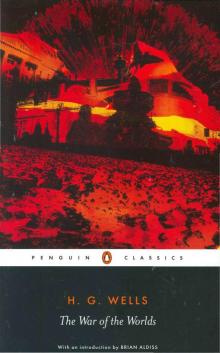 The War of the Worlds (Penguin Classics)
The War of the Worlds (Penguin Classics) Twelve Stories and a Dream
Twelve Stories and a Dream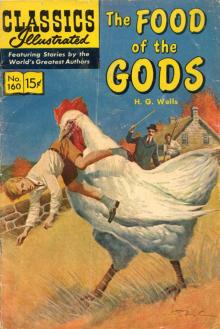 The Food of the Gods and How It Came to Earth
The Food of the Gods and How It Came to Earth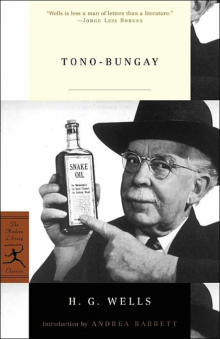 Tono-Bungay
Tono-Bungay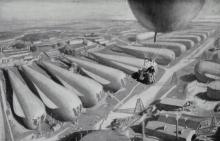 The War in the Air
The War in the Air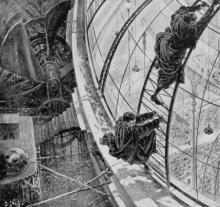 The Sleeper Awakes
The Sleeper Awakes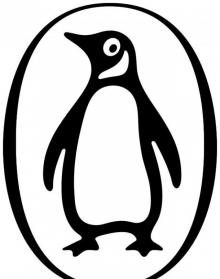 The Country of the Blind and Other Stories
The Country of the Blind and Other Stories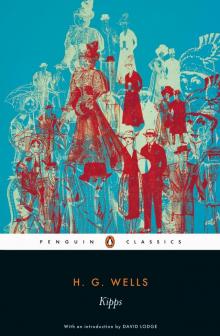 Kipps
Kipps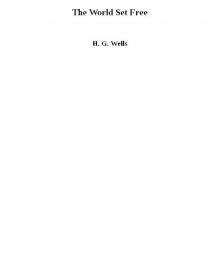 The World Set Free
The World Set Free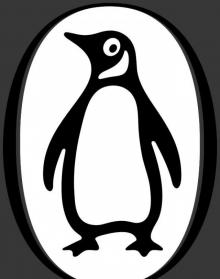 The Country of the Blind and other Selected Stories
The Country of the Blind and other Selected Stories Ann Veronica
Ann Veronica Ann Veronica a Modern Love Story
Ann Veronica a Modern Love Story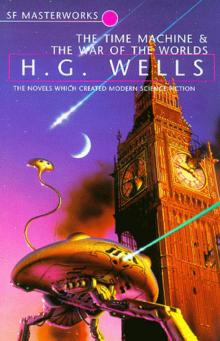 The Time Machine and The War of the Worlds
The Time Machine and The War of the Worlds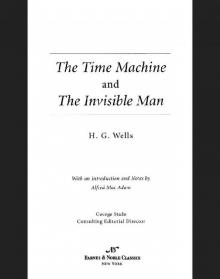 Time Machine and The Invisible Man (Barnes & Noble Classics Series)
Time Machine and The Invisible Man (Barnes & Noble Classics Series)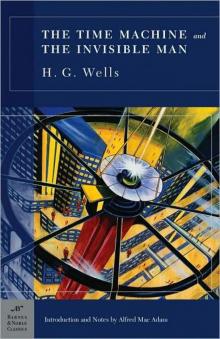 The Time Machine and The Invisible Man
The Time Machine and The Invisible Man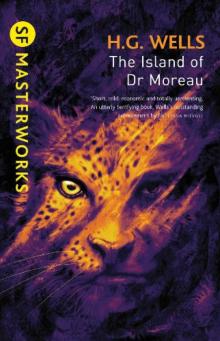 The Island of Dr. Moreau
The Island of Dr. Moreau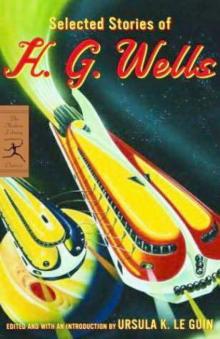 Selected Stories of H. G. Wells
Selected Stories of H. G. Wells Island of Dr. Moreau
Island of Dr. Moreau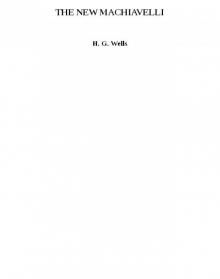 THE NEW MACHIAVELLI
THE NEW MACHIAVELLI